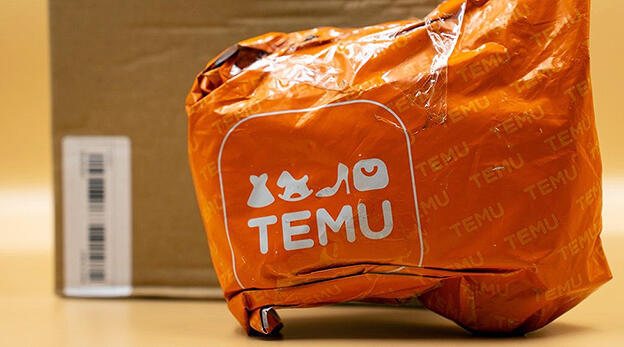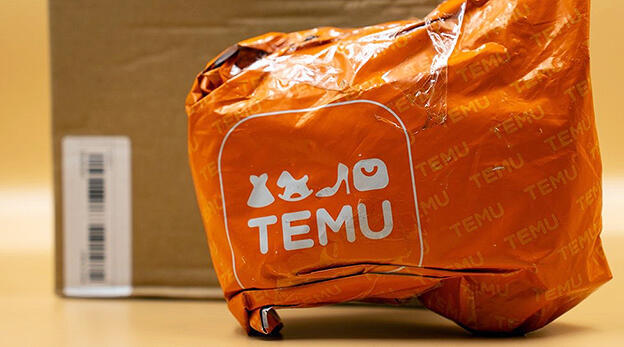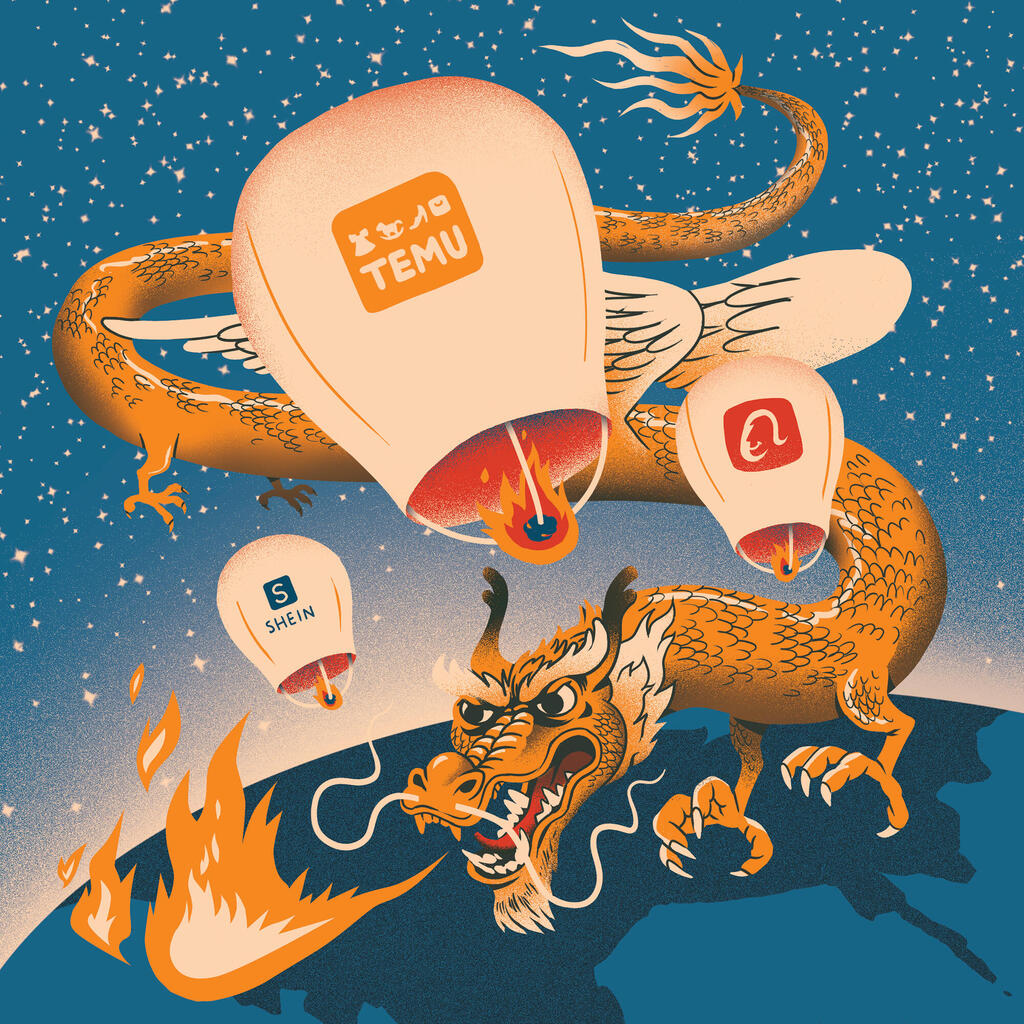
The meteoric rise of Temu - the Chinese e-commerce company changing the market
Within a year, a once unknown Chinese company called Temu became a hit in the western consumer world, after making a strategic decision to conquer American markets first, via cheap, mass production, unrestrained advertising and an immersive technological design
For many decades, China has served as the industrial zone for the Western world, where factories migrate to survive. Cheap labor amid poor conditions enabled cheap production at an extraordinary pace, changing consumption habits beyond recognition. But in recent years, China has shifted to becoming the world’s marketplace - no longer a manufacturer, but a supplier; and not imitations but original, successful brands.
After Alibaba, JD.com and Taobao established themselves as essential parts of Chinese commerce, ultra-fast fashion company Shein was the first to significantly break through the country's borders. Established in 2008, Shein became one of the most popular in the world after the outbreak of the COVID-19 pandemic. In 2022, it achieved global sales of $23 billion - a jump of 475% compared to before the pandemic in 2019. Its strength is in its endless variety, a tremendous supply chain and the ability to produce according to demand, and all at very low prices. In late 2022, the Bank of America called Shein "the biggest threat to online fashion retailers." According to Earnest Research, Shein today accounts for 28% of the fast fashion market in the U.S., after Amazon at 33%. Shein concluded 2023 with a profit of $2 billion - twice as much as the year prior.
In the heart of the Shein madness, Temu was launched, and not by coincidence. Temu’s model is similar to Shein, but their strategy is far more aggressive. From the beginning, the parent company PDD Holdings set a clear goal: to achieve at least one day of selling a higher volume than Shein by the end of the third quarter of 2023. Temu achieved this goal quickly, and without offering a dramatically new or different product.
Unlike its competitors who began operating in China before looking overseas, Temu was established in Boston and its goal is the opposite: to conquer American markets, and then everyone else. Temu gave birth to a new takeover strategy: cheap and mass production, based on tens of thousands of suppliers, massive spending, and sweeping technological design. Thus emerged a new consumer generation - one that doesn’t simply buy, but discovers. Temu's consumerism is not a necessity - it’s entertainment.
The most downloads in 2023
Temu came out of nowhere, and is suddenly everywhere. In September 2022, it began operations in the U.S., and by March 2023, it was already operating in 48 countries across Europe, Australia, and the Middle East (via Israel). In less than a year, its app was downloaded by 250 million users worldwide, over half of them in the U.S. Today, Temu is the second most popular shopping app in the U.S., second only to Amazon. In Germany, it's the most popular. In 2023, Temu was the most downloaded app globally (337 million), ahead of Shein (262 million), leaving Amazon (188 million) and Shopify (160 million) in the dust. Even in Israel, Temu quickly surpassed Shein in terms of monthly orders.
The sudden aggressive appearance, low prices, and lotteries on the platform left many users wondering if it was a legitimate site at all. But Temu is no scam, and it was transparent about its goals for its first full year of operations (2023): $10 billion in global sales. It not only achieved this goal but surpassed it. According to CICC, a Chinese investment management firm, in 2023, Temu achieved revenues of $18 billion. During the same period, its parent company PDD's stock soared by almost 50%, reaching a valuation of $175 billion. For a moment, PDD surpassed Alibaba, founded 16 years earlier, as the largest e-commerce company in China in market value.
These achievements cannot be underestimated, but they can be narrowed down to one decision: Temu decided to win the battle for awareness using one and only one tool — money. According to J.P. Morgan, Temu invested $1.7 billion in advertising alone in the past year, a figure expected to jump to $3 billion in 2024. This is a larger sum than the advertising expenditures of all major companies in the U.S. except Amazon, Procter & Gamble, and PepsiCo. According to Tencent's analysis, Temu spends up to $10 million a day on ads on Meta and Google. According to Etsy CEO Josh Silverman, Temu and Shein's heavy advertising spending "almost single-handedly affected the cost of advertising in the market." By the way, not all advertising is online: in the last Super Bowl halftime, the most-watched event in the U.S. and the holy grail of advertisers, Temu bought airtime for three ads that looked like they were made by low-budget enthusiasts. That's the platform; it doesn't need to be fancy or entice customers with aesthetics. All that is needed is for Temu’s name and logo to be everywhere.
Unlike Shein, this success has not yet translated into profits for Temu. PDD suffered losses due to aggressive operations amounting to 20 billion Chinese yuan (slightly less than $3 billion), but given the high demand, it increased the allocation to 23 billion Chinese yuan (just over $3 billion). According to Chinese data company 36kr, the deep discounts and various subsidies result in a 30% loss on every order for Temu. This strategy, called "loss leader," includes a huge subsidy in exchange for gaining market share. This was also Amazon's method of establishing its dominance in its first decade of operations.
Shein and Temu’s successes are not only changing the western consumer world, but also their Chinese competitors. Alibaba founder Jack Ma and JD.com founder Richard Liu both separately claimed in recent months that their companies need to adapt to the fierce competition from both rising stars. "We must change," Liu wrote in an internal memo at the e-commerce giant, "otherwise we have no way out." While Ma called on the company's employees "to pay any price and sacrifice" to cope with the fierce competition. Alibaba, in response, replaced senior executives in its e-commerce divisions.
‘Shop like a billionaire’
Shein and Temu aren’t trying to be Amazon; they aren’t trying to maintain and expand market share through principles like "customer obsession," fast shipping, and cost-free returns. Instead, they focus on the fleeting taste of the new consumer generation, and their expectation their demands will constantly be met without pause — ADHD consumerism. After the company builds a large user base (or acquires it with giant subsidies), it attracts consumers to the platform with an unreasonable amount of cheap products in a seemingly uneconomical way. At first glance, this doesn't sound new, but Shein and Temu have turned it into an art.
Shein developed an algorithm that scans searches on Google, TikTok, Instagram, and other popular websites, identifies trends, and generates small design orders from them. The company works with about 3,000 designers who translate the trends into inexpensive designs, while tens of thousands of suppliers who work with them produce a small order of between 50 and 100 items in less than ten days. Popular designs generate mass production.
Shein calls this management system "a large-scale automatic reordering and replenishment model," through which it adds about 6,000 new products every day. On the other hand, Temu works with about 80,000 suppliers who produce every product imaginable, using its platform to connect with consumers. It collects data aggressively to keep up with changing tastes and trends, and at the same time adds thousands of new cheap items to the platform every day to satisfy the appetite of Gen Z consumers. "Shop like a billionaire," says Temu's slogan which means that consumers should buy as much as they want since the cost is so low. What better way to win the loyalty of American, Israeli, and European consumers?
This focus on thousands of new items has created two innovations — the first is a business model of "discovery" consumerism, rather than "search" consumerism. Consumers used to search for an item like "pants" on a website, but today the thousands of new Shein and Temu items creates an endless scrolling experience, just like TikTok, and a constant turnover which creates an insatiable excitement for the consumer, also surprising in its sense of urgency. The endless scrolling is also addictive. Companies expect, and succeed, in getting users to open their app when they're bored, without any specific need. Temu has crowned this trend "new electronic consumerism" and defines one of its core principles as "spontaneous consumption."
Temu adds what they call a "behavioral component" to shopping and gamification (like its sister company Pinduoduo's app), which includes frequent lotteries and encourages users to win discounts through sharing. These have made Temu's numbers stand out across the industry: according to research company eMarketer, a Temu user spends an average of 18 minutes a day on the app, compared to just ten minutes on Amazon, 11 minutes on AliExpress and eBay.
The second innovation is an individual approach to bulk consumption, known as “hauls,” which has become a marketing phenomenon in itself. Shein started this trend by sending thousands of "micro-celebrities" free items in giant packages. The content of the packages, sometimes including a hundred items or more, would be showcased in viral videos. Influencers provide followers with discount codes and receive sales commissions from the companies. Today, Shein hauls and Temu hauls are among the most popular searches on TikTok and YouTube, with Shein being more dominant.
















